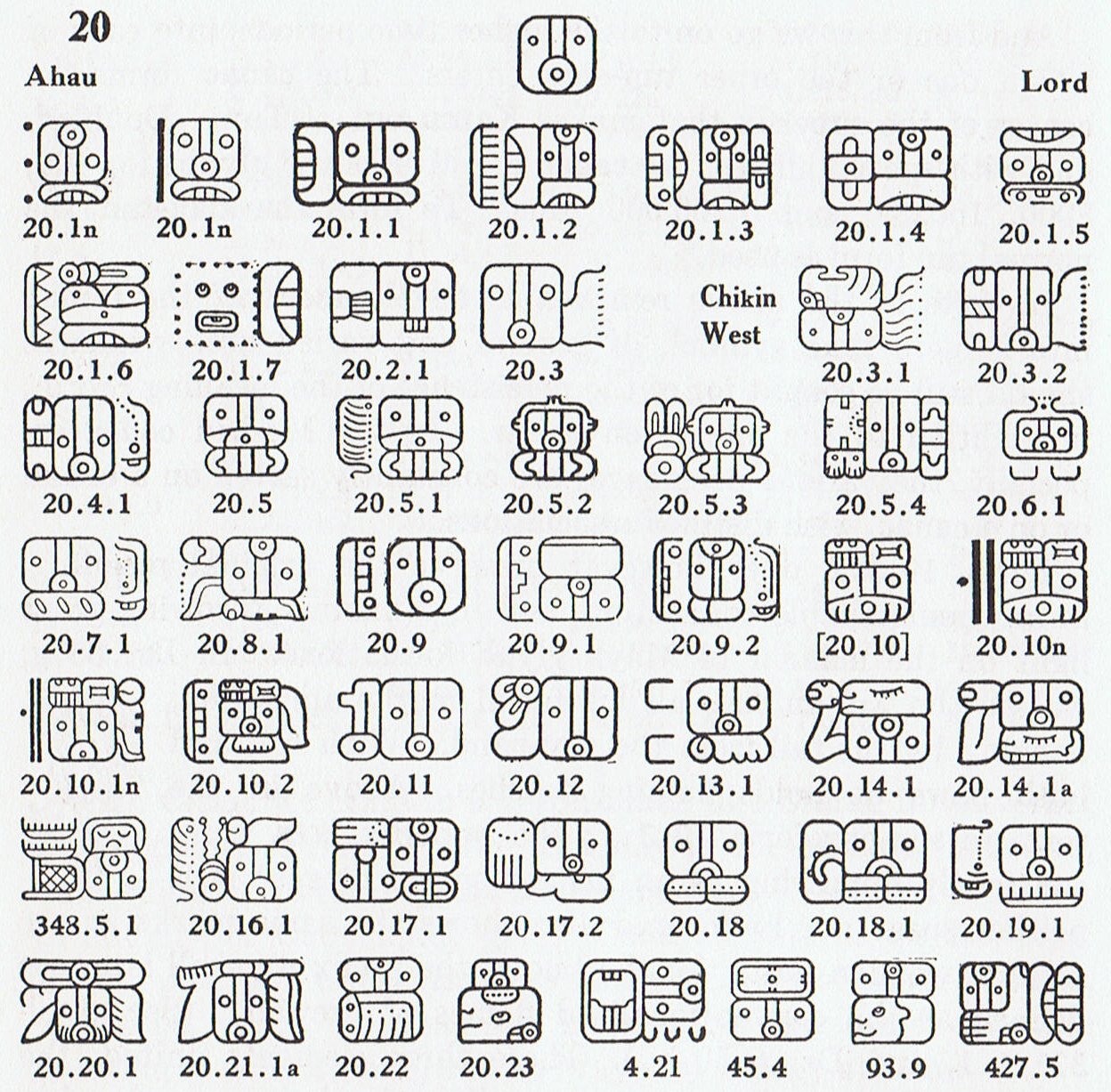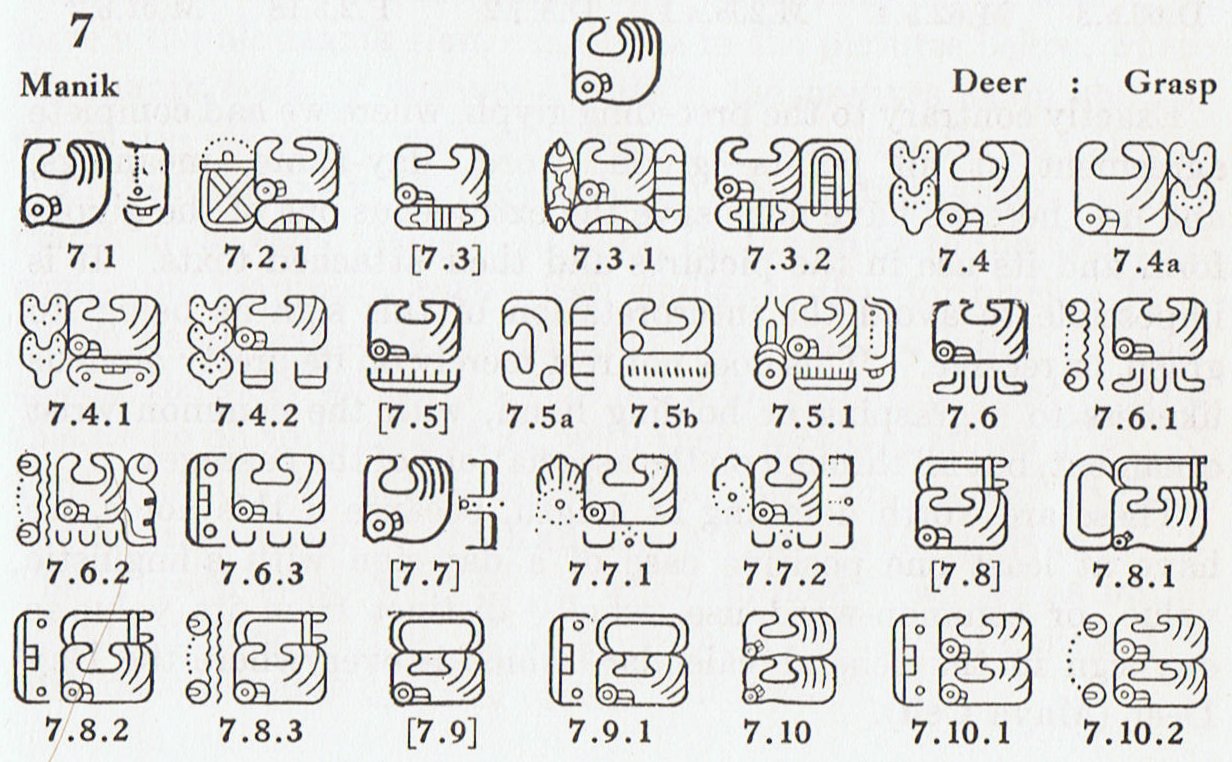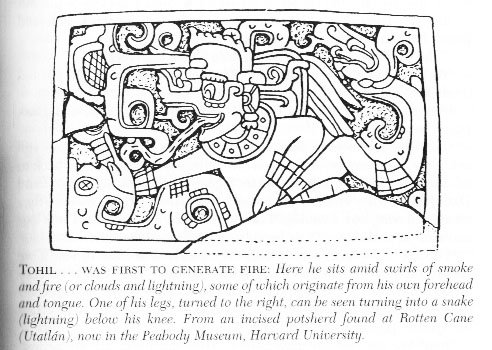|
TRANSLATIONS
By using simple arithmetic on what the glyphs seem to tell us it is possible to establish what structures the creators of the rongorongo texts had in mind. Without arithmetic, on the other hand, it is hardly possible to understand the texts. The glyph sequence is our primary source of information, but without counting there will be no firm ground to stand on. The 260 days in the light surely were once connected with summer. 10 * 26 = 260 means there will be 10 months (for the sun). The rest of the year was not counted (counting must take place in the light of reason). 5 * 72 = 360 = 6 * 60 was a good measure of the total year, leaving one hand in the dark. 72 was also connected with the pentagon of Venus as observed in the night sky during 8 years. 360 - 260 = 100 was a beautiful and affirmative sign. The 'winter' could be expressed as 10 * 10 (a double sign of 'death'). 365 - 260 = 105 = 5 * 21 was also a nice expression - meaning 1 hand more than the total 20 for 'winter'. 260 + 100 + 5 = 365 days as defined by the path of the sun. The direction west was among the Maya depicted as a grasping hand: "The manik, with the tzab, or serpent's rattles as prefix [cfr 7.4 below], runs across Madrid tz. 22 , the figures in the pictures all holding the rattle; it runs across the hunting scenes of Madrid tz. 61, 62, and finally appears in all four clauses of tz. 175, the so-called 'baptism' tzolkin. It seems impossible, with all this, to avoid assigning the value of grasping or receiving. But in the final confirmation, we have the direct evidence of the signs for East and West. For the East we have the glyph Ahau-Kin, the Lord Sun, the Lord of Day; for the West we have Manik-Kin, exactly corresponding to the term Chikin, the biting or eating of the Sun, seizing it in the mouth." (Gates) Moon is rising in the west, sun in the east. It is moon who is the grasping hand, I think, the female who takes care of sun at the end of his journey. The pictures below are from Gates:
Manik has number 7 (moon) and Ahau number 20 (a new sun will rise). In a way I am documenting this because next glyph type in the dictionary is rima. On the other hand, Manik is highly relevant also for kava. The kava ceremony is a terrestrial image of what happens above in the sky. In a magic world the events in the sky are connected causally with the events on earth. Therefore it is necessary to time the kava ceremony to take place when the conditions in the sky are appropriate. Without the ceremonies in human society taking place at the right time the celestial events will be disturbed. Time might even stop. The grasping hand takes care of the sun at the horizon in the west. In Polynesia the 'grasping hand' is Hine nui te Po: ... 'My child', said Makea now in a tone of deep sorrow, 'there has been a bad omen for us. When I performed the tohi ceremony over you I missed out a part of the prayers. I remebered it too late. I am afraid this means that you are going to die.' 'What's she like, Hine nui te Po?' asked Maui. 'Look over there', said Makea, pointing to the ice-cold mountains beneath the flaming clouds of sunset. 'What you see there is Hine nui, flashing where the sky meets the earth. Her body is like a woman's, but the pupils of her eyes are greenstone and her hair is kelp. Her mouth is that of a barracuda, and in the place where men enter her she has sharp teeth of obsidian and greenstone.' If sun 'dies' in the west it becomes dark. Somehow a new fire must be established before it is time for the sun of next day to emerge through the hole at the horizon in the east. Sun is swallowed in the west and reborn in the east. The Maya had a good understanding of the process:
Drilling a new fire 'Manik' had to be involved - it was she who had swallowed the fire and now she must return it. Likewise the lady of the dark time Hine nui te Po of course must return the fire before dawn. Polynesian fire making was not drilling but 'plowing', yet there was a vertical element combined with a horizontal base (like a papa). The fire making needed a male element (vertical) in contact with a female element (a 'mouth'). Therefore: ... male and chiefly water (semen) in the womb of a kava bowl whose feet are called 'breasts' (sucu), and from the front of which, tied to the upper part of an inverted triangle, a sacred cord stretches out toward the chief ... The cord is decorated with small white cowries, not only a sign of chieftainship but by name, buli leka, a continuation of the metaphor of birth - buli, 'to form', refers in Fijian procreation theory to the conceptual acception of the male in the body of the woman. The sacrificed child of the people will thus give birth to the chief ... The vertical fire making element is the kava sign in Aa8-31 and the horizontal female element is what develops into a 'feathered mauga' - pregnancy. Inside in the dark there is a fire which will be born later. In Ka3-11 the perspective is different, the kava sign is horizontal and has no sharp 'knees', it is female:
The vertical element is not a kava sign but haś, obviously a male. Feathers and fire are male. According to Popol Vuh the fire making was done by Tohil, and we must consider the possibility that when Makea had forgotten part of the tohi ceremony the name referred to Tohil: ... After that a great downpour began, which cut short the fire of the tribes. And hail fell thickly on all the tribes, and their fires were put out by the hail. Their fires didn't start up again. So then Jaguar Quitze and Jaguar Night asked for their fire again: 'Tohil, we'll be finished off by the cold', they told Tohil. 'Well, do not grive', said Tohil. Then he started a fire. He pivoted inside his sandal ...
|





